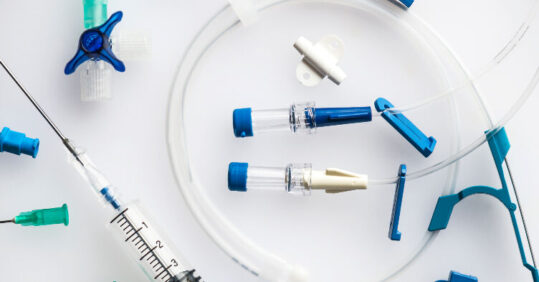New catheter material could help prevent infections

Researchers at the University of Nottingham have discovered a new material that can coat the insides of catheters and prevent common bacterial infections which are a significant challenge when catheterising patients.
The material, known as an acrylate copolymer, can stop the formation of biofilms, collections of single and multicelled bacterial species which group together, causing catheter-associated urinary tract infections (CAUTIs). The copolymer also prevents the swarming of bacteria as well as encrustation within catheters, which can lead to infection. The findings are published in Science Advances.
Related Article: NHSE confirms dates and eligibility for autumn Covid and flu jabs
Indwelling urinary tract catheters are the most commonly used prosthetic medical devices, with 15 to 25% of patients requiring bladder catheterisation during hospitalisation. However, they can often lead to CAUTIs and are responsible for 75 to 80% of hospital-acquired urinary tract infections occurring annually worldwide.
In 2012, the research team, including engineers, pharmacists and doctors from the University of Nottingham, discovered a material that could prevent biofilms from forming within catheters. However, the material did not prevent the swarming of bacteria which causes catheter encrustation and is unique to CAUTIs.
Andrew Hook, Assistant Professor from the school of pharmacy, said: ‘We always had this lingering question as to whether the material we previously discovered prevented biofilm formation, could be modified to prevent swarming and biomineralisation.’
The swarming is caused by a bacteria known as proteus mirabilis, often found in catheters. It forms large bacterial ‘rafts’ on hard surfaces and it is common for rafts to form up the length of a catheter into the bladder. Blockages also occur as the bacteria drives encrustation, and this can lead to serious kidney infections and septicaemia. In addition, encrustation around the outside of the catheter makes removal extremely painful for patients.
Related Article: Gypsy, Roma and Traveller healthcare: How can primary care serve this group?
Professor Hook said: ‘We have tested more than 450 acrylate polymers and discovered that by combining two different monomers we could create a new material that is all-encompassing and prevents multi-species biofilm formation, swarming and biomineralisation. This is totally unique and currently the only biomaterial capable of preventing swarming that we are aware of.’
Professor Paul Williams from the school of life sciences believes the team’s breakthrough will be ‘great news’ for clinicians and patients. He said: ‘We’re hopeful that this could mark a step-change in the management of CAUTIs in the future and help to dramatically reduce the number of CAUTIs in patients in hospital and other healthcare settings.’
Related Article: Public urged to see practice nurse before travelling amid high enteric fever cases

See how our symptom tool can help you make better sense of patient presentations
Click here to search a symptom




